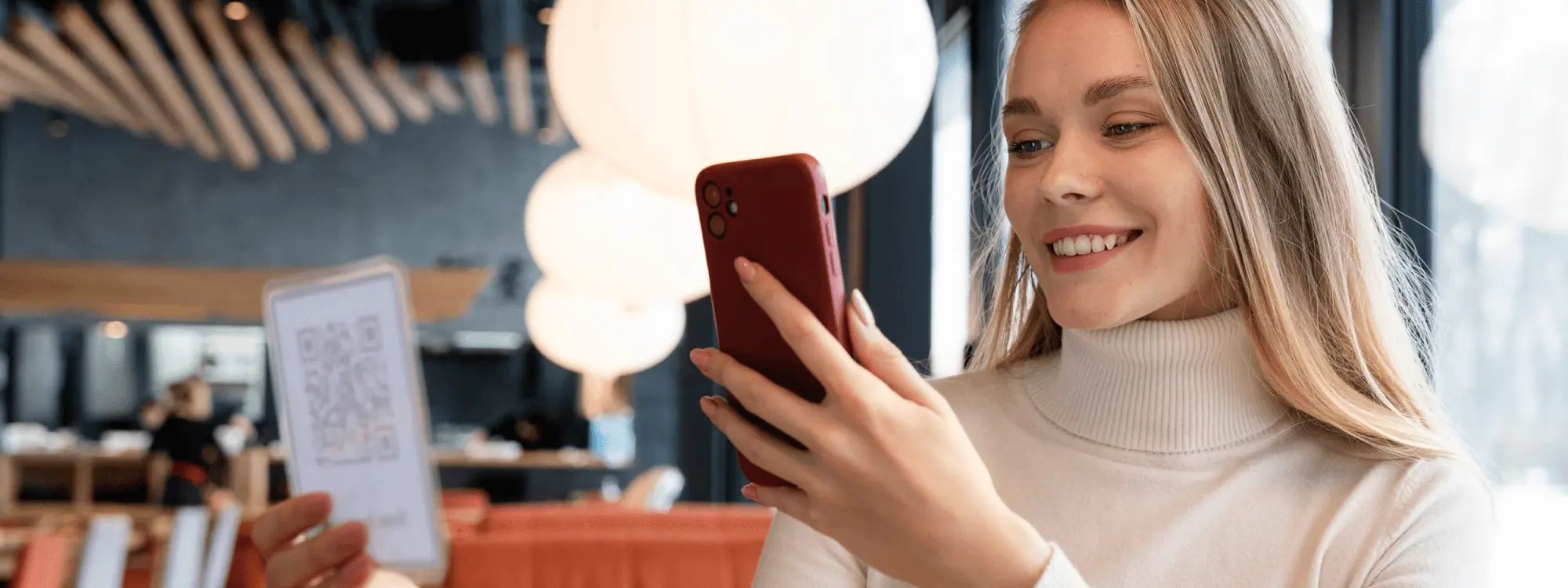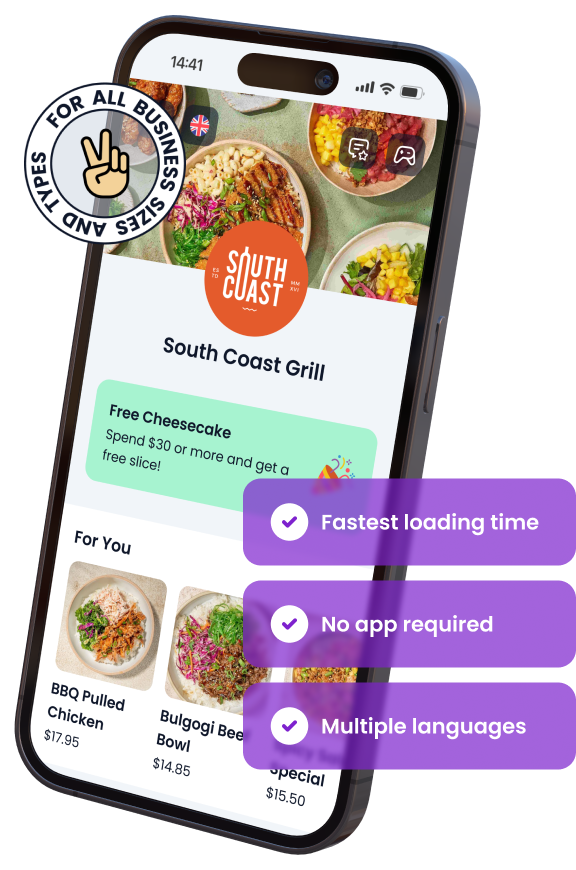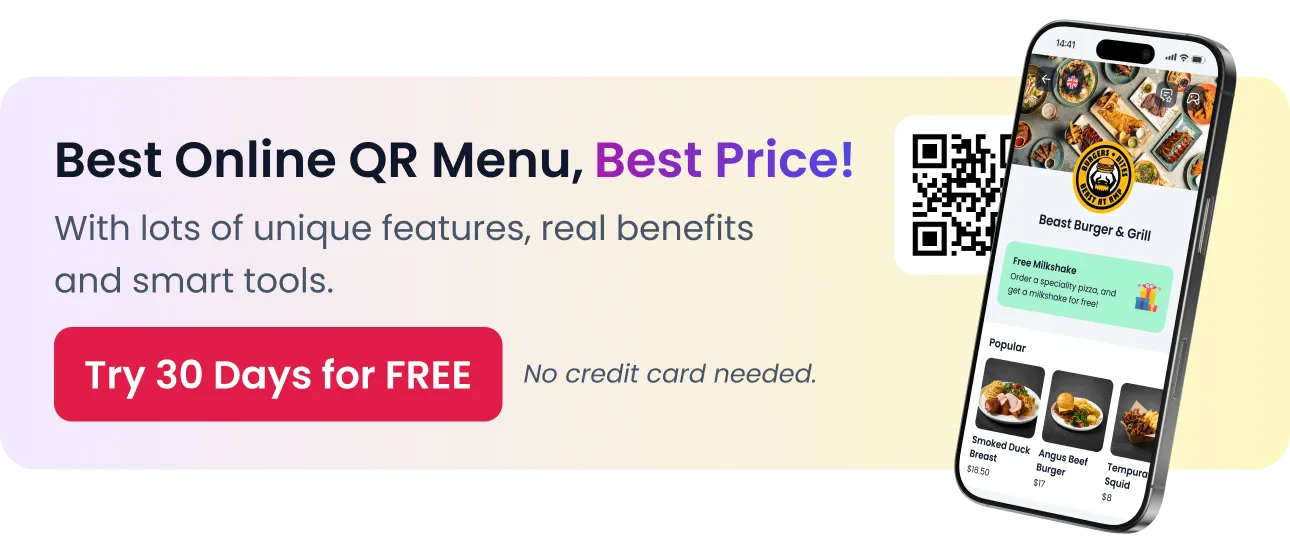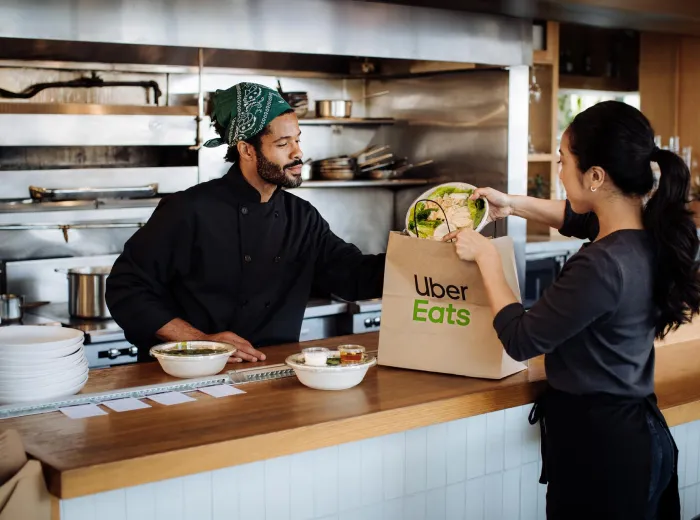

Why Create a Digital QR Code Menu for Your Restaurant?
In the fast-paced world of the restaurant industry, staying ahead of trends and meeting customer expectations is crucial for success. As technology continues to revolutionize how we interact with the world, restaurants are increasingly adopting digital solutions to enhance the dining experience. One such innovation that has gained widespread popularity is the digital QR code menu.
A digital QR code menu is more than just a tool for viewing the menu on a smartphone; it represents a shift towards a more efficient, contactless, and customer-centric dining experience. With a simple scan, customers can access an up-to-date menu, place orders, and even pay their bills—all from the comfort of their seats. This technological advancement not only streamlines operations but also aligns with the growing demand for convenience and safety, especially in a post-pandemic world.
As traditional menus become a thing of the past, the benefits of adopting a digital QR code menu are too significant to ignore. From reducing costs and minimizing errors to enhancing customer engagement and promoting sustainability, QR code menus offer a myriad of advantages that can elevate your restaurant’s service and profitability.
In this article, we will delve into why creating a digital QR code menu for your restaurant is a smart move, exploring the benefits, practical implementation steps, and how to effectively market this innovative tool to your customers. Whether you’re looking to improve operational efficiency or simply offer a more modern dining experience, this guide will provide you with the insights and strategies you need to make an informed decision.
Would you like to listen our deep-dive conversation about this article?
Introduction to Digital QR Code Menus
Digital QR code menus have become a transformative tool in the restaurant industry, offering a modern and efficient way for customers to interact with your menu. But what exactly is a digital QR code menu, and why are so many restaurants making the switch?
What is a Digital QR Code Menu?
A digital QR code menu is a contactless, digital version of your restaurant’s menu that customers can access by scanning a QR code with their smartphones. Here’s how it works:
QR Code Basics:
- A QR code (Quick Response code) is a type of matrix barcode that can be scanned using a smartphone camera.
- Once scanned, the QR code redirects the user to a digital platform, typically a web page, where your menu is displayed.
Key Features of a Digital QR Code Menu:
- Interactive: Customers can navigate through different sections, view detailed descriptions, and sometimes even place orders directly from the menu.
- Updatable: Unlike traditional paper menus, digital QR code menus can be updated in real-time, allowing you to make changes instantly without the cost of reprinting.
- Customizable: The digital nature of these menus means you can easily add images, videos, or even customer reviews to enhance the dining experience.
Why Restaurants Are Adopting Digital Menus
The shift towards digital QR code menus is driven by several factors, each contributing to a better dining experience for both customers and restaurant operators:
The Rise of Contactless Dining Experiences:
- Health and Safety: In the wake of the COVID-19 pandemic, the need for contactless solutions became paramount. QR code menus reduce the need for physical contact between customers and staff, thereby minimizing the risk of virus transmission.
- Customer Comfort: Many customers now prefer minimal physical interaction, making digital menus an appealing option for a more comfortable dining experience.
Trends in the Restaurant Industry Post-Pandemic:
- Digital Transformation: The restaurant industry has been undergoing a digital transformation, with more establishments embracing technology to improve efficiency and customer satisfaction.
- Sustainability: QR code menus contribute to sustainability efforts by reducing the need for paper, aligning with the growing consumer demand for eco-friendly practices.
Overall, digital QR code menus represent a significant evolution in how restaurants operate, offering a seamless, contactless, and highly adaptable solution to meet the modern diner’s needs. As we explore further, you’ll discover the numerous benefits these menus bring to your restaurant.
Benefits of Implementing a QR Code Menu
Adopting a QR code menu offers a host of benefits that can transform your restaurant’s operations, enhance the customer experience, and ultimately boost your bottom line. Let’s explore these advantages in detail.
Enhanced Customer Experience
A QR code menu significantly improves the dining experience by offering convenience, speed, and accessibility:
Streamlined Ordering Process:
- Quick Access: Customers can instantly access the menu by scanning the QR code, eliminating the need to wait for a physical menu.
- Easy Navigation: Digital menus are often more interactive and easier to navigate, allowing customers to browse through categories, view detailed descriptions, and even filter options based on dietary preferences.
- Order Customization: Some QR code menus enable customers to customize their orders directly on their phones, reducing misunderstandings and ensuring their meal is prepared exactly as desired.
Real-Time Updates:
- Up-to-Date Information: You can update your digital menu in real-time, ensuring customers always see the most current offerings, prices, and specials.
- Highlighting Specials: Easily promote daily specials, seasonal items, or limited-time offers directly on the menu without the need for reprints.
Interactive Features:
- High-Quality Visuals: Enhance the customer experience with high-quality images, videos, or even GIFs of your dishes, making the menu more engaging and enticing.
- Customer Reviews and Ratings: Incorporate reviews or ratings directly into the menu, helping customers make informed choices based on peer feedback.
Operational Efficiency
Implementing a QR code menu can streamline your restaurant’s operations, leading to greater efficiency and productivity:
Reduced Wait Times:
- Faster Table Turnover: By allowing customers to access the menu and place orders more quickly, QR code menus can help reduce wait times and increase table turnover, ultimately serving more customers in less time.
- Immediate Updates: If an item is out of stock or a new dish is added, the menu can be updated instantly, preventing delays and confusion during service.
Minimized Errors:
- Accurate Orders: When customers input their orders directly, it reduces the chances of miscommunication between them and the staff, leading to fewer mistakes and higher customer satisfaction.
- Consistent Information: With a digital menu, you ensure that all customers see the same, accurate information, reducing discrepancies that can arise with printed menus.
Efficient Staffing:
- Focus on Service: With the ordering process streamlined, your staff can focus more on delivering exceptional service, enhancing the overall dining experience.
- Training and Onboarding: Digital menus simplify training by standardizing menu information, making it easier for new staff to familiarize themselves with the menu quickly.
Cost Savings and Environmental Impact
Adopting a QR code menu can lead to significant cost savings while also contributing to environmental sustainability:
Lower Printing Costs:
- No More Reprints: Traditional menus can be expensive to print, especially if you need to update them frequently. With a digital menu, you eliminate the cost of reprinting menus whenever changes are made.
- Dynamic Pricing: Easily adjust prices in real-time based on demand, seasonal availability, or special events, without the need to update physical menus.
Reduced Paper Waste:
- Eco-Friendly Solution: By reducing or eliminating the use of paper menus, your restaurant can significantly cut down on paper waste, aligning with environmentally conscious practices.
- Sustainability Appeal: Today’s consumers are increasingly concerned with sustainability. Offering a digital menu can enhance your restaurant’s reputation as an eco-friendly establishment, attracting customers who value green practices.
Long-Term Savings:
- Investment in Technology: While there may be an initial cost to implement a QR code menu system, the long-term savings from reduced printing costs, increased efficiency, and higher customer satisfaction can outweigh these initial expenses.
Overall, the benefits of implementing a QR code menu extend beyond just operational improvements. They offer a way to elevate the dining experience, reduce costs, and position your restaurant as a modern, forward-thinking establishment. As we move forward, we’ll explore how to create and implement a digital QR code menu effectively.
How to Create a Digital QR Code Menu
Creating a digital QR code menu is an essential step toward modernizing your restaurant’s operations and enhancing the customer experience. To ensure a successful implementation, you need to follow a strategic approach that includes selecting the right platform, designing an effective menu, and implementing the QR code within your restaurant. Here’s how you can do it:
Choosing the Right Platform
When it comes to selecting a platform for your digital QR code menu, Menuviel stands out as an excellent option, offering a range of features tailored to meet the needs of modern restaurants.
Key Features of Menuviel:
- Single-Point Menu Management: Manage all your menu items from a single dashboard, making it easy to update prices, descriptions, and images in real-time.
- Multiple Branch Management: If you operate multiple locations, Menuviel allows you to manage menus across all branches, ensuring consistency while allowing for branch-specific customization.
- Google Reviews Integration: Enhance your menu by integrating Google Reviews directly, allowing customers to see ratings and reviews of your dishes as they browse.
- Promo and Pop-Up Banners: Utilize promotional banners or pop-up messages within the menu to highlight special offers, new dishes, or upcoming events.
- Multiple Language Support: Cater to a diverse customer base by offering your menu in multiple languages, ensuring that everyone can easily understand and order from your menu.
- Link to Online Food Ordering Apps: While Menuviel does not integrate with POS systems, it allows you to add links to popular online food ordering apps. Customers can seamlessly place orders through these apps directly from the menu.
Designing an Effective Digital Menu
After choosing Menuviel as your platform, the next step is to design a digital menu that is both visually appealing and easy to navigate.
Focus on Usability:
- Simple Navigation: Organize your menu into clear categories, such as appetizers, mains, desserts, and drinks. This structure ensures that customers can easily find what they are looking for without excessive scrolling.
- Clean and Readable Font: Menuviel automatically uses a clean and easy-to-read font for your menu, ensuring that all text is legible on smartphone screens.
- Light and Dark Scheme Options: While Menuviel doesn’t allow for custom color schemes, it offers both light and dark themes. You can choose the theme that best suits your restaurant’s ambiance and branding.
Customizing Visual Elements:
- Logo and Cover Image: Customize the look of your digital menu by uploading your restaurant’s logo and a cover image. This adds a personalized touch and strengthens your brand identity.
- Banners and Promotions: Leverage Menuviel’s promo and pop-up banners to draw attention to specials, new items, or limited-time offers, making them stand out on the menu.
Detailed Descriptions:
- Ingredients and Allergen Information: Provide comprehensive descriptions for each dish, including ingredients, preparation methods, and any allergens, to help customers make informed choices.
- Transparent Pricing: Clearly list all prices and any additional charges for extras, ensuring that customers have all the information they need to make a decision.
Multi-Language Support:
- Language Options: Utilize Menuviel’s multi-language support to create versions of your menu in the languages most commonly spoken by your customers, ensuring accessibility for a wider audience.
Implementing the QR Code in Your Restaurant
After designing your menu with Menuviel, the next step is to generate and implement the QR code within your restaurant.
Generating and Customizing Your QR Code:
- QR Code Generation: Menuviel allows you to easily generate a QR code for your digital menu.
- Adding Ordering Links: Since Menuviel doesn’t integrate with POS systems, you can include links to popular online food ordering apps in your digital menu. This enables customers to place orders seamlessly through those apps directly from the menu.
Strategic Placement of QR Codes:
- Tabletop Displays: Place QR codes on tabletop displays where customers can easily scan them when seated.
- Entrance and Waiting Areas: Position QR codes at the entrance or in waiting areas so customers can browse the menu while they wait.
- Takeout and Delivery Packaging: Include QR codes on takeout and delivery packaging to encourage customers to explore your menu for future orders.
Educating Staff and Customers:
- Staff Training: Ensure your staff is well-trained to assist customers in using the QR code menu, especially those who may be less familiar with the technology.
- Customer Guidance: Provide simple instructions on how to scan the QR code, either through signage or with a brief explanation from your staff.
By leveraging the features of Menuviel and following best practices in design and implementation, you can create a digital QR code menu that not only enhances the dining experience but also streamlines your restaurant’s operations. Next, we’ll explore how to effectively market your new digital menu to maximize its impact.
Marketing Your QR Code Menu
Once you’ve created and implemented your digital QR code menu, the next crucial step is to effectively market it to your customers. A well-executed marketing strategy can help you maximize the impact of your QR code menu, driving customer engagement and boosting sales. Here’s how to promote your digital menu both online and within your restaurant.
Promoting Your Digital Menu on Social Media
Social media is a powerful tool for reaching a broad audience and encouraging customers to interact with your digital menu. Here’s how to leverage various platforms:
Create Engaging Content:
- Menu Teasers: Share visually appealing images or videos of your most popular dishes, accompanied by a QR code that directs followers to your digital menu.
- Behind-the-Scenes: Post behind-the-scenes content showing how your team uses the digital menu, highlighting its ease of use and the benefits it offers to customers.
- Customer Testimonials: Share testimonials from customers who have used the QR code menu, emphasizing their positive experiences.
Run Contests and Giveaways:
- QR Code Challenges: Encourage customers to scan the QR code and participate in a contest, such as sharing their favorite dish from the digital menu for a chance to win a free meal.
- Social Media Giveaways: Run a giveaway where customers who order through the digital menu are entered to win a gift card or a free meal.
Utilize Hashtags and Geotagging:
- Branded Hashtags: Create a unique hashtag for your digital menu campaign (e.g., #ScanAndDine) and encourage customers to use it when sharing their dining experiences on social media.
- Geotagging: Geotag your posts to increase visibility among local users who might be searching for nearby dining options.
Leveraging Digital Marketing Channels
In addition to social media, other digital marketing channels can be highly effective in promoting your QR code menu:
Email Marketing:
- Announcement Emails: Send out an email to your subscriber list announcing the launch of your digital QR code menu. Highlight the benefits, such as ease of use, up-to-date information, and special promotions available only through the digital menu.
- Exclusive Offers: Offer exclusive discounts or deals for customers who use the QR code menu, and promote these offers through email campaigns.
Online Advertising:
- Google Ads: Run targeted Google Ads that highlight your digital menu and direct users to your restaurant’s website, where they can access the menu online.
- Social Media Ads: Utilize paid advertising on platforms like Facebook and Instagram to promote your digital menu, targeting local audiences who are likely to visit your restaurant.
Website Integration:
- Embed the QR Code: Display the QR code prominently on your restaurant’s website, allowing visitors to scan it and access the menu directly from their devices.
- Blog Posts: Write blog posts or articles on your website about the advantages of your new digital menu, incorporating SEO keywords to attract organic traffic from search engines.
Enhancing Your Brand Image
Your digital QR code menu can be a powerful tool for reinforcing your brand’s image and positioning your restaurant as a modern, forward-thinking establishment.
Highlight Innovation:
- Modern Dining Experience: Emphasize how your digital menu enhances the dining experience by offering a convenient, contactless option that aligns with modern consumer expectations.
- Sustainability: If your menu is part of a broader sustainability initiative (e.g., reducing paper waste), promote this aspect to appeal to eco-conscious customers.
Use Customer Feedback:
- Solicit Reviews: Encourage customers to leave reviews about their experience with the QR code menu. Positive feedback can be used in marketing materials and social media posts to build trust and credibility.
- Continuous Improvement: Use customer feedback to continuously improve your digital menu. Regularly update your menu and promotions based on customer preferences and feedback, and communicate these updates through your marketing channels.
In-Restaurant Promotion:
- Signage: Use eye-catching signage within your restaurant to promote the QR code menu. Display signs at the entrance, on tables, and in other visible areas to encourage customers to scan the code.
- Staff Recommendations: Train your staff to actively promote the QR code menu to customers, highlighting its benefits and ease of use.
By effectively marketing your digital QR code menu, you can drive higher engagement, increase customer satisfaction, and ultimately boost sales. A well-promoted digital menu not only enhances the dining experience but also strengthens your restaurant’s brand and competitive position in the market.
Addressing Common Concerns About QR Code Menus
While QR code menus offer numerous benefits, some customers and restaurant owners may have concerns about their implementation and use. Addressing these concerns proactively can help ensure a smooth transition and increase acceptance among all users. Here’s how to tackle the most common issues.
Is a QR Code Menu Safe and Secure?
Security is a top priority when implementing any digital solution, and QR code menus are no exception. Here’s how to ensure that your QR code menu is safe and secure:
Data Privacy:
- No Personal Data Collection: Assure customers that scanning the QR code does not collect any personal information. The QR code simply directs them to a webpage where the menu is hosted.
- Secure Hosting: Ensure that your digital menu is hosted on a secure website (HTTPS), which protects customer data from being intercepted by malicious parties.
Secure Transactions:
- Integration with Secure Payment Gateways: If your QR code menu allows for direct ordering and payment, integrate it with trusted and secure payment gateways to protect customer financial information.
- Regular Security Audits: Conduct regular security audits to identify and fix any vulnerabilities in your digital menu platform.
How to Cater to Tech-Savvy and Non-Tech-Savvy Customers
Not all customers are comfortable with technology, and some may prefer traditional methods of ordering. It’s important to cater to both tech-savvy and non-tech-savvy customers:
Providing Alternatives:
- Physical Menus Available: Keep a small number of sanitized physical menus on hand for customers who are uncomfortable with or unable to use the QR code menu.
- Order via Staff: Allow customers to place orders directly with staff if they prefer not to use the digital menu. Staff should be trained to offer this option discreetly.
Customer Education:
- Simple Instructions: Display clear instructions on how to use the QR code menu at key points in the restaurant (e.g., entrance, tables). Include visuals that demonstrate the scanning process.
- Staff Assistance: Train staff to assist customers with scanning the QR code and navigating the digital menu. Ensure they do so in a friendly and non-intimidating manner.
Offering Digital Literacy Support:
- Tutorials: Consider creating a short tutorial video on your website or social media platforms that walks customers through the process of using the QR code menu.
- In-Person Guidance: During the early stages of implementation, have staff available to guide customers through the process in person.
Overcoming Resistance from Staff and Customers
Change can often be met with resistance, both from staff and customers. Here’s how to manage and reduce resistance to QR code menus:
Engaging Staff:
- Involve Staff in the Process: Involve your staff in the decision-making process when introducing the QR code menu. Solicit their feedback and address any concerns they might have.
- Training Programs: Provide comprehensive training to ensure staff are comfortable using the QR code menu and can effectively assist customers. This training should include how to troubleshoot common issues.
- Incentivize Adoption: Offer incentives to staff for promoting the QR code menu and helping customers use it. This could be in the form of bonuses, recognition, or other rewards.
Building Customer Acceptance:
- Gradual Introduction: If possible, introduce the QR code menu gradually. Start by offering it as an option alongside traditional menus before transitioning fully.
- Highlighting Benefits: Emphasize the benefits of the QR code menu in your marketing and communications, such as its convenience, hygiene benefits, and environmental impact.
- Customer Feedback Loop: Encourage customers to provide feedback on the QR code menu. Use this feedback to make improvements and show customers that their opinions are valued.
Case Studies and Success Stories:
- Sharing Success Stories: Share case studies or testimonials from other restaurants that have successfully implemented QR code menus. Highlight the positive impact on operations and customer satisfaction.
- Demonstrating Effectiveness: Use data to show how the QR code menu has improved your restaurant’s operations, such as increased order accuracy, reduced wait times, and positive customer feedback.
Balancing Innovation with Tradition
While QR code menus represent a significant innovation, it’s important to balance this with the traditions that some customers may value:
Maintaining a Human Touch:
- Personalized Service: Ensure that the shift to digital menus does not detract from personalized customer service. Encourage staff to engage with customers in a friendly and attentive manner, even as they use the digital menu.
- Traditional Elements: Retain certain traditional elements that customers love, such as the ambiance, décor, and customer service style, to ensure that the digital innovation complements rather than replaces the dining experience.
By proactively addressing these common concerns, you can ensure a smoother transition to a digital QR code menu, increase customer satisfaction, and reduce any potential friction in the process. This approach helps you balance innovation with customer comfort, ultimately leading to a more successful implementation.
Future of Digital QR Code Menus in the Restaurant Industry
As technology continues to evolve, the role of digital QR code menus in the restaurant industry is set to expand even further. These menus are not just a passing trend; they represent a significant shift in how restaurants operate and engage with customers. In this section, we’ll explore the potential future developments of QR code menus and how they are likely to shape the dining experience in the years to come.
The Role of AI and Personalization in Digital Menus
Artificial Intelligence (AI) is poised to play a significant role in the future of digital QR code menus, bringing a new level of personalization and efficiency to the dining experience:
Personalized Recommendations:
- AI-Driven Suggestions: QR code menus integrated with AI can analyze customer data, such as past orders or preferences, to offer personalized menu recommendations. For instance, if a customer frequently orders vegetarian dishes, the menu could highlight vegetarian options first.
- Dynamic Menus: AI can adjust menu displays based on time of day, weather, or customer demographics, offering suggestions that are most relevant to the current context (e.g., promoting hot soups on a cold day).
Enhanced Customer Engagement:
- Chatbots for Order Assistance: AI-powered chatbots could be integrated into digital menus, allowing customers to ask questions or receive assistance in real-time as they browse the menu.
- Voice-Activated Menus: Future digital menus might incorporate voice-activated features, enabling customers to navigate the menu and place orders using voice commands, further simplifying the ordering process.
Integrating QR Code Menus with Other Digital Tools
The integration of QR code menus with other digital tools will likely become more seamless and widespread, creating a unified and efficient restaurant management system:
POS System Integration:
- Streamlined Operations: Although some platforms like Menuviel currently do not integrate directly with POS systems, future developments may see more seamless integration. This would allow orders placed through the QR code menu to be automatically synced with the restaurant’s POS system, reducing manual entry and minimizing errors.
- Real-Time Inventory Management: Integration with inventory management systems could enable real-time updates to the menu based on stock levels, automatically removing out-of-stock items from the menu to avoid customer disappointment.
Contactless Payments:
- Integrated Payment Solutions: Future QR code menus may include built-in payment options, allowing customers to order and pay directly through the menu without the need for additional apps or external payment gateways. This would further enhance the contactless dining experience.
- Loyalty Programs: Digital menus could integrate with loyalty programs, automatically applying discounts or rewards points to a customer’s order, making the dining experience more rewarding.
Adapting to Evolving Customer Preferences
As customer expectations continue to evolve, QR code menus will need to adapt to meet new demands, ensuring that they remain relevant and valuable to the dining experience:
Sustainability and Eco-Friendly Practices:
- Paperless Initiatives: As environmental concerns become increasingly important to consumers, QR code menus will likely play a key role in helping restaurants reduce their carbon footprint by eliminating the need for paper menus altogether.
- Green Certifications: Restaurants might start using digital menus as part of their efforts to obtain green certifications, appealing to eco-conscious diners who prioritize sustainability in their dining choices.
Customizable Dining Experiences:
- Dietary Preferences and Allergens: QR code menus may evolve to allow customers to customize their menu view based on dietary preferences or allergens, filtering out items that do not meet their needs.
- Interactive and Engaging Content: Future digital menus might offer more interactive content, such as virtual tours of the kitchen, chef interviews, or even live streams of meal preparation, creating a more immersive dining experience.
Mobile App Integration:
- Seamless Transition to Apps: As mobile apps become more integral to daily life, QR code menus could be integrated directly into restaurant apps, offering a consistent experience whether customers are dining in, ordering takeout, or engaging with the restaurant online.
- In-App Rewards and Gamification: QR code menus within apps could include gamified elements, such as unlocking rewards for frequent visits or participation in restaurant challenges, further enhancing customer loyalty.
The Evolution of Customer Interaction
QR code menus are likely to evolve in ways that further enhance customer interaction and satisfaction, making dining out a more enjoyable and efficient experience:
Augmented Reality (AR):
- Virtual Dish Previews: With the integration of AR, customers could use their smartphones to see virtual representations of menu items on their table before ordering, giving them a better sense of portion size and presentation.
- Interactive Nutritional Information: AR could be used to provide interactive nutritional information, allowing customers to explore the ingredients, calorie counts, and health benefits of each dish in more detail.
Continued Focus on Health and Safety:
- Post-Pandemic Hygiene Standards: Even as the immediate impact of the COVID-19 pandemic fades, the emphasis on health and safety is likely to continue. QR code menus will remain a key component of contactless dining, helping restaurants maintain high hygiene standards.
Enhanced Data Analytics:
- Customer Insights: As digital menus collect more data, restaurants will be able to analyze customer behavior more effectively, leading to insights that can inform menu design, marketing strategies, and overall customer experience.
- Predictive Ordering: Data-driven insights might allow restaurants to predict customer orders based on trends, enabling better preparation and reducing wait times.
As digital QR code menus continue to evolve, they will play an increasingly central role in the restaurant industry, helping establishments stay ahead of trends and meet the ever-changing needs of their customers. By embracing these future developments, restaurants can not only improve operational efficiency but also create more personalized, engaging, and memorable dining experiences.
Conclusion
The adoption of digital QR code menus is more than just a trend—it’s a strategic move that can significantly enhance your restaurant’s operations, customer experience, and overall competitiveness in a rapidly evolving industry. As we’ve explored in this guide, QR code menus offer a multitude of benefits, from streamlining the ordering process and reducing costs to enhancing customer engagement and supporting sustainability efforts.
By implementing a QR code menu, your restaurant can cater to the modern diner’s demand for convenience, safety, and personalization. Whether it’s through real-time menu updates, interactive features, or seamless integration with other digital tools, QR code menus provide a flexible and future-proof solution that meets the needs of both tech-savvy and traditional customers.
As you consider the next steps for your restaurant, embracing digital innovation is key to staying ahead in a competitive market. The future of dining is increasingly digital, and by adopting a QR code menu, you’re not only improving your current operations but also positioning your restaurant for long-term success.
In a world where customer preferences are constantly evolving, your willingness to adapt and innovate will set your restaurant apart. So, take the leap into the digital age with confidence, knowing that a well-implemented QR code menu can lead to a more efficient, customer-friendly, and profitable restaurant.
ABOUT THE AUTHOR
Erkin Coban
Your Customers Deserve The Best
And we got Menuviel for them.
The fastest and easy-to-use online QR menu with 12+ unique features. Choose Menuviel and elevate your service quality to the next level.
Use free for the first 30 days.

In This Article

Free AI Tools for Restaurants
TRY NOW ➜

Talk to them in their own language
With Menuviel, cater to an international customer base by adding multiple language options to your menus.







